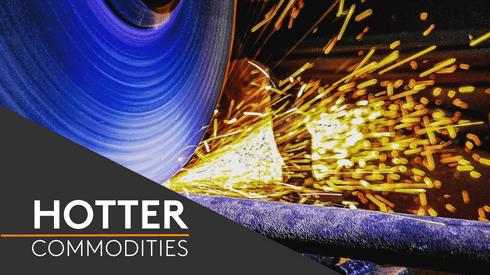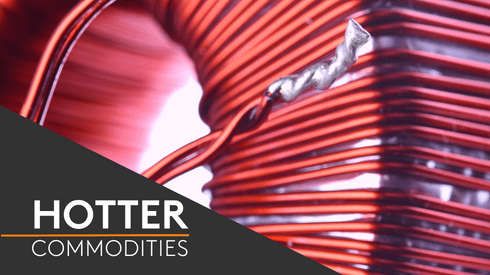Trade flows will change
China is the largest supplier of lithium cells and batteries into the United States, but that is likely to change soon, according to Fastmarkets’ battery raw materials analyst Jordan Roberts.
The IRA prohibits using critical minerals and battery components from a “foreign entity of concern,” which includes companies based in China, Russia, North Korea and Iran.
This could give nations such as Chile and Argentina in the near term – and, potentially, the European Union, Japan, South Korea and Australia in the medium term – more opportunity to sell lithium products into the US, Roberts said.
“I also expect imports of spodumene from Australia, Canada and Africa to increase, though to a lesser extent,” he added.
The US imported nearly 154,000 lithium cells and batteries (excluding those that were spent) from China in 2022, up from nearly 109,000 units in 2021 and more than double the approximately 71,000 units imported in 2019, according to data from the US International Trade Commission’s Interactive Trade DataWeb. Indonesia, Japan and Singapore were the other major suppliers in 2022.
From January through May of this year, however, US imports of lithium cells and batteries from China, Indonesia, Japan and Singapore fell significantly versus the same five-month period last year.
China is not a major exporter of lithium chemicals – oxides, hydroxides and carbonates –to the US because there is more value in shipping batteries, according to Roberts.
“We see the same thing in other metals. ‘Why ship rare earth oxides when we can export neodymium iron boron permanent magnets where 99% of the value is captured?’” he said. “There is little incentive for China to sell either carbonate or hydroxide to the US unless arbitrage opportunities arise.”
Chile was the largest importer of lithium oxides and hydroxides in 2022, accounting for nearly 1,300 tonnes out of the roughly 1,500 tonnes imported from all nations combined. The country also was the largest supplier of lithium carbonates last year with about 8,000 tonnes, following by Argentina with more than 6,000 tonnes.
“Livent will be importing carbonate from its operations in Argentina for further refining in Bessemer City, North Carolina, and Albemarle will be importing carbonate from Chile for further refining into hydroxide and specialty chemicals at Kings Mountain, North Carolina,” Roberts said.
What needs to be clarified is if, and how, companies with a percentage of foreign ownership, as well as American companies operating in nations such as China, could qualify for IRA tax credits, Roberts said.
Qualifying for IRA tax credits is complicated, so far
Navigating the qualification process for IRA tax credits can be tricky, according to Lisa Zarlenga, a partner at Steptoe & Johnson in charge of the law firm’s tax policy practice.
“Everyone wants to try to take advantage of what’s available, and there’s never harm in asking what you might be able to qualify for,” she told Fastmarkets. “Sometimes we’re dealing with technologies or components that don’t fit neatly into any specific definition, so we’re trying to figure out where or how they might fit, or how different credits might fit together.”
For example, how could a US-based company manufacturing battery components simultaneously qualify for the IRA’s Section 45X, which would allow it to receive credit for its production, as well as Section 48C, which would allow it to receive credit for a new or expanded facility, when the statute prohibits the same facility from taking both credits?
We’re trying to advise conservatively if they need to move forward with investments, while obviously telling them that it could change.
“We don’t have guidance on that yet,” Zarlenga said, noting that multiple companies have filed public commentary on this with the federal government. “We’re trying to advise conservatively if they need to move forward with investments, while obviously telling them that it could change.”
Similarly, to qualify for some IRA credits, particularly those related to investments, certain wage and apprenticeship levels must be satisfied, according to Zarlenga. If these requirements are not met, the baseline credits are far lower, which could make or break a project, she said.
“There’s a lot of speculation that the credits are going to be claimed in excess of what Congress predicted, which is a good thing,” she said. “But there might be some lost projects, where a company can get greater certainty from the governments in Canada or Europe, for example, and do their expansions there instead.”
The IRA added two unique and transformational monetization provisions:
- Direct-payment mechanisms, which enable cash payments from the Internal Revenue Service; and
- Transferability, allowing developers a one-time sale of their tax credit for upfront cash.
Similar to a personal yearly tax refund from the Internal Revenue Service, companies that qualify for IRA credits will actually claim them the following year, so it will take some time to see the results of all of these changes, according to Zarlenga.
“But I think you’ll see lenders get more comfortable lending on the promise of these credits,” she said.
The concept of an IRA premium remains open
Producers of battery raw materials will benefit from a lower cost of capital if they qualify for IRA credits, and they probably won’t charge their customers extra for their material via a so-called “IRA premium,” according to Emily Hersh, founder and chief executive officer of Luna Lithium.
Separate prices for IRA-compliant material versus non-IRA-compliant material are unlikely, because the price difference would create an arbitrage opportunity, which by nature is short-lived, she told Fastmarkets.
“The pressure is on producers and emerging producers to have their sourcing responsibilities embedded in their frameworks,” she said. “They will cross that bridge before they are physically producing, and once that bridge is crossed, they’re either in one world or another.”
For example, Hersh explained that producers operating in IRA-compliant nations would be eligible for grants or lower-interest long-term debt, allowing them to produce at a lower cost. Those lower costs are the benefit to producers, not whether or not they can charge more for IRA-compliant material, she said.
“It will shift where a company is on the cost curve,” she said.
Others think it is too early to say whether an IRA premium for battery materials will materialize.
“You cannot impose a premium – it will only happen if customers are willing to pay for it,” a source at an international commodity trading company said. “In my view, due to the IRA, there will likely be a premium on lithium, as well as all the other battery raw materials. However, it is still not clear how the IRA will fully work; there are key parts that have yet to be defined in the relationship with China.”
Said Roberts: “It’s hard to tell if there will be a premium yet. I think we just have to wait until the IRA fully kicks in and liquidity increases, and let the market decide what they are willing to pay for IRA-compliant or ESG-friendly material.”
Dalila Ouerghi in London contributed to this report.





